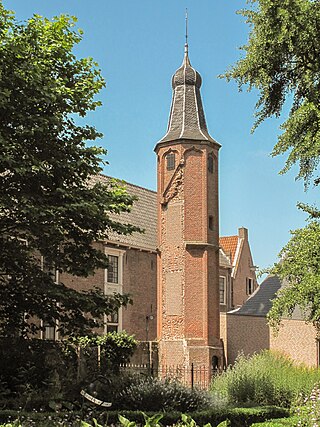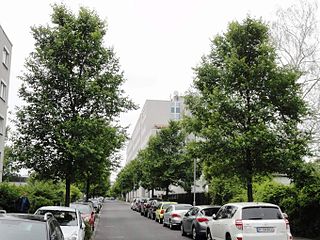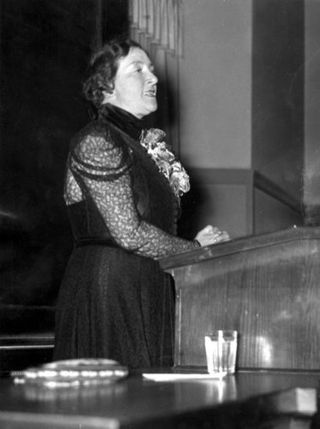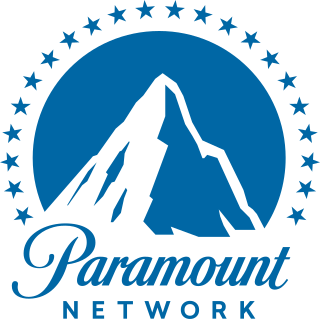
The European region known as the Low Countries, (Dutch: de Lage Landen, French: les Pays-Bas, historically once also known as the Netherlands, Flanders, or Belgica, is a coastal lowland region in Northwestern Europe forming the lower basin of the Rhine–Meuse–Scheldt delta and consisting today of the three modern "Benelux" countries: Belgium, Luxembourg, and the Netherlands - which English and French give the same name as the traditional regional name. Geographically and historically, the area also includes parts of France and Germany such as French Flanders and the German regions of East Frisia and Cleves. During the Middle Ages, the Low Countries were divided into numerous semi-independent principalities.

The University of Harderwijk (1648–1811), also named the Guelders Academy, was located in the city of Harderwijk, in the Republic of the United Provinces. It was founded by the province of Guelders (Gelre).

Frank Boudewijn de Groot is a Dutch singer-songwriter, known for "Welterusten Meneer de President" (1966).

Politionele acties, also politiële acties, refers to two major military offensives undertaken by the Netherlands on Java and Sumatra against the Republic of Indonesia during its struggle for independence in the Indonesian National Revolution. In Indonesia they are known collectively as the Agresi Militer Belanda, although the less common translation Aksi Polisionil is also used.

Ulmus 'Clusius' is a Dutch hybrid elm cultivar raised at the Dorschkamp Research Institute for Forestry & Landscape Planning, Wageningen, and released to commerce in 1983. 'Clusius' was derived from a crossing of the same Dutch clones that produced the fastigiate 'Lobel' released in 1973: '202' and '336'.
Ulmus 'Stavast' is a Dutch hybrid elm cultivar raised at the Dorschkamp Research Institute for Forestry & Landscape Planning, Wageningen, as clone '622' from the crossing of 'Commelin' with clone '202', itself a hybrid of the Exeter Elm Ulmus 'Exoniensis' and Himalayan Elm Ulmus wallichiana.
The elm cultivar Ulmus 'Escaillard' was first described by Dumont de Courset in 1811, and listed, without description, as Ulmus escaillard, by the André Leroy nursery at Angers, France, in 1849. It was distributed by the Baudriller nursery of Angers and by Hesse's nursery, Weener, Germany, as U. campestris 'Escaillardii', both nurseries using U. montana for wych elm cultivars. Herbarium specimens from a tree in The Hague obtained from the Hesse nursery label it variously U. glabra 'Escaillardii' and Ulmus × hollandica 'Escaillardi'. The latter was Christine Buisman's determination (1931), identifiable as hers by its handwriting and red label.
Ulmus laevis var. celtideaRogow. is a putative variety of European White Elm first described by Rogowicz, who found the tree in 1856 along the river Dnjepr near Chernihiv in what is now northern Ukraine. The type specimen is held at the National Herbarium of Ukraine. The variety was first named as Ulmus pedunculata var. celtidea. Litvinov (1908) considered it a species, calling it Ulmus celtideaLitv., a view not upheld by other authorities.

Ulmus 'Rebona' is an American hybrid cultivar raised by the Wisconsin Alumni Research Foundation (WARF) as selection 'W916', derived from a crossing of Japanese Elm clone W43-8 = 'Reseda' with Siberian Elm clone W426 grown from seed collected from a street tree at Yankton, South Dakota. The tree was registered in 1993 by Conrad Appel KG, of Darmstadt and is a sibling of 'New Horizon'. In Europe, 'Rebona' is marketed as a Resista elm protected under E U breeders' rights.

Ulmus 'Amsterdam' is a Dutch cultivar raised at the Huis Groeneveld in Baarn before 1950, possibly from an open pollination of the early Dutch cultivar 'Bea Schwarz', and introduced by Albert Hoekstra, former director of Amsterdam's horticulture department.

The 11th annual Berlin International Film Festival was held from 23 June to 4 July 1961. The Golden Bear was awarded to the Italian film La notte directed by Michelangelo Antonioni.

The 's-Hertogenbosch Red Eagles are an ice hockey team in 's-Hertogenbosch, the Netherlands. Previously part of the BeNe League, they have played in the Eerste Divisie since the 2017–2018 season.

The Low Countries derby, is the name given in football to any match between Belgium and the Netherlands. The countries have a long-standing tradition of rivalry in football, having played over 125 official derbies so far. Only Austria–Hungary and Argentina–Uruguay have been contested more often. Not only have the Low Countries met 19 times in the framework of major tournaments, they have also played at least 35 friendly cup duels.

Johanna van Ammers-Küller was a Dutch writer. She was one of the most successful European female writers in the interwar period, though her reputation suffered as a result of her collaboration during World War II.
De Lage Landen International B.V. (DLL) is a global vendor finance company with almost EUR 40 billion in assets. Founded in 1969 and headquartered in Eindhoven, The Netherlands, it provides asset-based financial solutions in the Agriculture, Food, Healthcare, Clean technology, Construction, Transportation, Industrial Equipment, Office Equipment and Technology industries.
Ons Volkske was the youth supplement of the Flemish newspaper Ons Volk Ontwaakt. It was published without interruption from 1932 until 1988, except for the years during World War II. The magazine was notable for its comics and together with 't Kapoentje it was the most important comic book magazine in Flanders.

Paramount Network is a Dutch free-to-cable television channel in the Netherlands, based on the American rebranded Paramount Network. The television channels launched as Spike on 1 October 2015. It was the third Spike channel next to the US and UK version of the channel. The television channel aimed at an audience of mainly men. Initially it only broadcast daily between 21:00 and 2:30, time-sharing with Nickelodeon. As of 12 December 2016 the channel is broadcasting 24 hours a day in the Netherlands. Until 6 January 2021, the channel was also available in Flanders. On 24 May 2022, the channel was renamed by Paramount Network.

Jaap ter Haar was a prolific Dutch author of children's literature.

Wanda Daniela Reisel Muller is a Dutch writer. Reisel was awarded the Anna Bijns Prize and her works has been nominated for other awards.













